28 july 2017
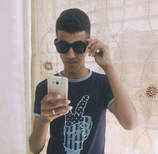
Israeli military shot, Friday, 16-year old Abdul-Rahman Hussein Abu Hamisha, during a protest against the ongoing Israeli assault on the al-Aqsa Mosque in Jerusalem, and the deadly and inhumane conditions of the Israeli siege of Gaza.
The Ministry of Health in Gaza said Abu Hamisha was participating in a protestm east of al-Boreij refugee camp in central Gaza, when Israeli troops, stationed across the border fence, opened fire on the protesters, killing him, and wounding at least ten others.
The injured were all said to have received bullet wounds from live ammunition fired by the Israeli soldiers. Some were injured in the al-Boreij protest, while others were shot during protest marches in Jabalia refugee camp, in the northern part of the Gaza Strip.
At least one was wounded in the Farahin area of Khan Younis, in the southern part of the Gaza Strip.
The killed and injured from al-Boreij camp were taken to the Al-Aqsa Hospital in Dir al-Balah.
In addition to firing live ammunition into the crowd, Israeli forces also fired tear gas, according to local sources. Two Palestinian medics were among those who had to be hospitalized for tear gas inhalation.
In the other protests that took place in Gaza Friday, in “Nahal Oz”, east of Gaza City, a young man was shot in the foot and was taken to Shifa hospital west of the city to receive treatment, while others suffered from tear gas inhalation.
The soldiers fired on the crowd when the protesters got too close to the Annexation Wall constructed east of the city.
In the Khan Younis protest, the Israeli soldiers fired live bullets and tear gas, injuring at least two youths with live bullets in the feet. The two children were evacuated to Nasser Hospital in the city of Khan Younis, and their condition is moderate.
There were also violent confrontations between youth and the Israeli military near the Beit Hanoun crossing “Erez” in the northern Gaza Strip, during which the Israeli soldiers fired live bullets and tear gas at the crowd. No injuries were reported in Beit Hanoun
Abu Hamisha was the second Palestinian to be killed by Israeli forces on Friday. The first was Abdullah Mahmoud Taqatqa, 24, who was shot near Gush Etzion settlement junction, south of Bethlehem, in the West Bank, after the army claimed he ran toward the while wielding a knife.
An eyewitness denied the military allegation, and said the Palestinian was at least twenty meters away from the nearest soldier.
The Ministry of Health in Gaza said Abu Hamisha was participating in a protestm east of al-Boreij refugee camp in central Gaza, when Israeli troops, stationed across the border fence, opened fire on the protesters, killing him, and wounding at least ten others.
The injured were all said to have received bullet wounds from live ammunition fired by the Israeli soldiers. Some were injured in the al-Boreij protest, while others were shot during protest marches in Jabalia refugee camp, in the northern part of the Gaza Strip.
At least one was wounded in the Farahin area of Khan Younis, in the southern part of the Gaza Strip.
The killed and injured from al-Boreij camp were taken to the Al-Aqsa Hospital in Dir al-Balah.
In addition to firing live ammunition into the crowd, Israeli forces also fired tear gas, according to local sources. Two Palestinian medics were among those who had to be hospitalized for tear gas inhalation.
In the other protests that took place in Gaza Friday, in “Nahal Oz”, east of Gaza City, a young man was shot in the foot and was taken to Shifa hospital west of the city to receive treatment, while others suffered from tear gas inhalation.
The soldiers fired on the crowd when the protesters got too close to the Annexation Wall constructed east of the city.
In the Khan Younis protest, the Israeli soldiers fired live bullets and tear gas, injuring at least two youths with live bullets in the feet. The two children were evacuated to Nasser Hospital in the city of Khan Younis, and their condition is moderate.
There were also violent confrontations between youth and the Israeli military near the Beit Hanoun crossing “Erez” in the northern Gaza Strip, during which the Israeli soldiers fired live bullets and tear gas at the crowd. No injuries were reported in Beit Hanoun
Abu Hamisha was the second Palestinian to be killed by Israeli forces on Friday. The first was Abdullah Mahmoud Taqatqa, 24, who was shot near Gush Etzion settlement junction, south of Bethlehem, in the West Bank, after the army claimed he ran toward the while wielding a knife.
An eyewitness denied the military allegation, and said the Palestinian was at least twenty meters away from the nearest soldier.
26 july 2017
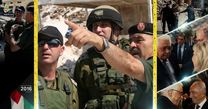
Israeli Occupation Forces (IOF) advanced a limited distance in Palestinian lands to the east of Gaza City on Wednesday.
Eyewitnesses told the PIC reporter that five Israeli bulldozers escorted by three tanks advanced into lands to the eastern outskirts of Gaza amid leveling and measuring works in the lands adjacent to the border separation fence.
Israeli military vehicles and bulldozers advanced into the waste complex east of Juhr al-Deek village. Israeli drones were seen flying in the skies of the village during the incursion, the eyewitnesses pointed out.
Eyewitnesses told the PIC reporter that five Israeli bulldozers escorted by three tanks advanced into lands to the eastern outskirts of Gaza amid leveling and measuring works in the lands adjacent to the border separation fence.
Israeli military vehicles and bulldozers advanced into the waste complex east of Juhr al-Deek village. Israeli drones were seen flying in the skies of the village during the incursion, the eyewitnesses pointed out.
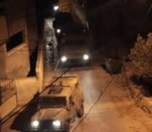
Israeli soldiers invaded, on Wednesday at dawn, many Palestinian communities in the West Bank governorates of Tulkarem, Jenin and Bethlehem, stormed and ransacked many homes and abducted eleven Palestinians, in addition to wounding one in Qalqilia, and causing many others to suffer the effects of teargas inhalation.
The Tulkarem office of the Palestinian Prisoners Society (PPS), in the northern part of the West Bank, said the soldiers invaded Atteel town, north of the city, broke into dozens of homes and interrogated many Palestinians, before abducting six.
It stated that the soldiers abducted Wasef Masarwa, 46, Wael Hilmi Odaetallah, Yasser Mohammad Odaetallah, As’ad Mohammad Odaetallah, As’ad Odaetallah and Ahmad Khaled Shokri.
Furthermore, the soldiers invaded homes in Qabatia town, south of the northern West Bank city of Jenin, abducted Yousef Nimir Khozeimiyya, 60, and his son ‘Ala, 24, after breaking into Yousef’s home looking for his nephew, Yasser.
The soldiers also abducted another Palestinian, identified as Rida Ahmad Turkman, 22, and withdrew from the town, taking the abducted Palestinians to an unknown destination.
In addition, the soldiers broke into many stores in Barta’a town, isolated behind the Annexation Wall, south of Jenin, and violently search them, causing damage.
Also, the Bethlehem office of the PPS said the soldiers abducted Omar Ahmad al-‘Amour, 24, from his home in Teqoua town, east of the city, while Nidal Ali Affana, 20, from Aida refugee camp, north of Bethlehem, was abducted a the Container military roadblock, northeast of Bethlehem.
In related news, several army jeeps invaded Qalqilia city, in northern West Bank, and clashed with dozens of youngsters, who hurled stones and empty bottles at the military, after the soldiers stormed and ransacked many homes.
The soldiers fired many rubber-coated steel bullets, concussion grenades and gas bombs, wounding a Palestinian with a rubber-coated steel bullet in the head, before he was moved to a local hospital.
Local medics also provided many Palestinians the needed treatment, due to the severe effects of teargas inhalation.
In the Gaza Strip, Israeli navy ships opened fire on many Palestinian fishing boats, in the northern part of the coastal region, forcing the fishers back to shore.
The Tulkarem office of the Palestinian Prisoners Society (PPS), in the northern part of the West Bank, said the soldiers invaded Atteel town, north of the city, broke into dozens of homes and interrogated many Palestinians, before abducting six.
It stated that the soldiers abducted Wasef Masarwa, 46, Wael Hilmi Odaetallah, Yasser Mohammad Odaetallah, As’ad Mohammad Odaetallah, As’ad Odaetallah and Ahmad Khaled Shokri.
Furthermore, the soldiers invaded homes in Qabatia town, south of the northern West Bank city of Jenin, abducted Yousef Nimir Khozeimiyya, 60, and his son ‘Ala, 24, after breaking into Yousef’s home looking for his nephew, Yasser.
The soldiers also abducted another Palestinian, identified as Rida Ahmad Turkman, 22, and withdrew from the town, taking the abducted Palestinians to an unknown destination.
In addition, the soldiers broke into many stores in Barta’a town, isolated behind the Annexation Wall, south of Jenin, and violently search them, causing damage.
Also, the Bethlehem office of the PPS said the soldiers abducted Omar Ahmad al-‘Amour, 24, from his home in Teqoua town, east of the city, while Nidal Ali Affana, 20, from Aida refugee camp, north of Bethlehem, was abducted a the Container military roadblock, northeast of Bethlehem.
In related news, several army jeeps invaded Qalqilia city, in northern West Bank, and clashed with dozens of youngsters, who hurled stones and empty bottles at the military, after the soldiers stormed and ransacked many homes.
The soldiers fired many rubber-coated steel bullets, concussion grenades and gas bombs, wounding a Palestinian with a rubber-coated steel bullet in the head, before he was moved to a local hospital.
Local medics also provided many Palestinians the needed treatment, due to the severe effects of teargas inhalation.
In the Gaza Strip, Israeli navy ships opened fire on many Palestinian fishing boats, in the northern part of the coastal region, forcing the fishers back to shore.
25 july 2017
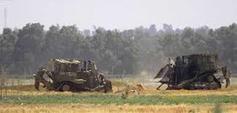
Local sources reported that Israeli tanks fired shells Tuesday morning toward Palestinian farmland and grazing pastures for animals east of Qarara, in Khan Younis, in the southern Gaza Strip.
The shells reportedly were fired from the Kosovim military base located southeast of Khan Younis. Israeli forces also entered the area with armored vehicles, according to local sources, and fired a number of rounds.
Palestinians in Gaza are living through record summer heat with only 3 hours of electricity a day or less, and 8 hours of water every three days.
Numerous Palestinians in Gaza have suffered heat exhaustion, and the sewage plant has been unable to filter waste for the last two months.
According to a recent report in Al Jazeera, “Gaza is in the third month of an externally enforced reduction of its already meagre electrical power supply.
The enclave of two million people would ordinarily require about 450 megawatts (MW) of electricity daily for around-the-clock power. However, over much of the past decade, as part of the tight Israeli blockade of Gaza, its power supplies have fluctuated around 200MW, resulting in persistent blackouts.
But over the past several months, according to the Israeli human rights organization Gisha, Gaza’s supply each day has varied from 140MW to an all-time low of 70MW, lengthening the blackouts and the human suffering.”
The shells reportedly were fired from the Kosovim military base located southeast of Khan Younis. Israeli forces also entered the area with armored vehicles, according to local sources, and fired a number of rounds.
Palestinians in Gaza are living through record summer heat with only 3 hours of electricity a day or less, and 8 hours of water every three days.
Numerous Palestinians in Gaza have suffered heat exhaustion, and the sewage plant has been unable to filter waste for the last two months.
According to a recent report in Al Jazeera, “Gaza is in the third month of an externally enforced reduction of its already meagre electrical power supply.
The enclave of two million people would ordinarily require about 450 megawatts (MW) of electricity daily for around-the-clock power. However, over much of the past decade, as part of the tight Israeli blockade of Gaza, its power supplies have fluctuated around 200MW, resulting in persistent blackouts.
But over the past several months, according to the Israeli human rights organization Gisha, Gaza’s supply each day has varied from 140MW to an all-time low of 70MW, lengthening the blackouts and the human suffering.”
24 july 2017
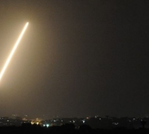
Israeli soldiers fired several, on Monday at dawn, artillery shells into a few areas, east of Deir al-Balah, in central Gaza, causing damage.
Palestinian sources in Gaza said the soldiers fired shells into monitoring sites used by fighters of the Al-Qassam Brigades, the armed wing of Hamas.
Meanwhile, the Israeli army said a shell, allegedly fired from the Gaza Strip, landed and exploded in an open area in the Sha’ar HaNegev Regional Council of Settlements, causing no injuries or damage.
Israeli Ynet News said the warning systems were not activated when the shell was reportedly fired from Gaza, and that the army initiated an investigation into the issue,
Palestinian sources in Gaza said the soldiers fired shells into monitoring sites used by fighters of the Al-Qassam Brigades, the armed wing of Hamas.
Meanwhile, the Israeli army said a shell, allegedly fired from the Gaza Strip, landed and exploded in an open area in the Sha’ar HaNegev Regional Council of Settlements, causing no injuries or damage.
Israeli Ynet News said the warning systems were not activated when the shell was reportedly fired from Gaza, and that the army initiated an investigation into the issue,
18 july 2017
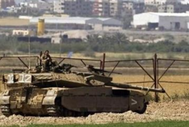
On Tuesday morning, Israeli soldiers, stationed across the border fence, fired dozens of live rounds at homes and farmlands, east of Khan Younis, in the southern part of the besieged Gaza Strip.
The soldiers, stationed on military towers surrounding Kissufim military base, east of Khan Younis, fired dozens of rounds into agricultural lands and homes, causing damage, and forcing the Palestinians out of their lands in fear of further escalation.
The violations and attacks against the Palestinian lands and homes was carried out amidst extensive deployment of tanks and armored vehicles near the border fence, while military drones flew overhead.
The soldiers also detonated explosives in several areas near the border fence; medial sources in Khan Younis said the explosions could be heard in all parts of the governorate.
The soldiers, stationed on military towers surrounding Kissufim military base, east of Khan Younis, fired dozens of rounds into agricultural lands and homes, causing damage, and forcing the Palestinians out of their lands in fear of further escalation.
The violations and attacks against the Palestinian lands and homes was carried out amidst extensive deployment of tanks and armored vehicles near the border fence, while military drones flew overhead.
The soldiers also detonated explosives in several areas near the border fence; medial sources in Khan Younis said the explosions could be heard in all parts of the governorate.
17 july 2017
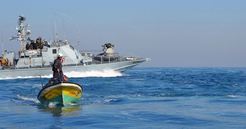
Two Palestinian fishermen were shot and injured by the Israeli occupation navy off Gaza’s southern coast late on Sunday evening.
Head of the Fishermen’s Union in Khan Younis, Fuad al-Amoudi, said 19-year-old fisherman Ibrahim Abu Jahjouh and Khedr Abu Shamala, 24, sustained injuries after the Israeli navy targeted their ship with gunfire off Khan Younis shore, south of Gaza.
Speaking with PIC, al-Amoudi said paramedics transferred the fishermen to Nasser Hospital so as to be treated for the moderate wounds inflicted by the Israeli gunshots.
Head of the Fishermen’s Union in Khan Younis, Fuad al-Amoudi, said 19-year-old fisherman Ibrahim Abu Jahjouh and Khedr Abu Shamala, 24, sustained injuries after the Israeli navy targeted their ship with gunfire off Khan Younis shore, south of Gaza.
Speaking with PIC, al-Amoudi said paramedics transferred the fishermen to Nasser Hospital so as to be treated for the moderate wounds inflicted by the Israeli gunshots.
11 july 2017
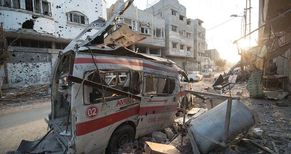
By Julie Webb-Pullman
Three years on since the Israeli bombardment of Gaza Julie Webb-Pullman recalls a makeshift morgue outside Al-Shifa Hospital, the lack of medical supplies to treat the wounded and the screams of children whose parents who have already been killed.
The scenes as I go to work each day are harrowing as I must walk past the morgue of Al-Shifa Hospital.
For the first few days I didn’t even realise it was a morgue. There were a few cars parked outside, small groups of people clustered against the walls and family members grieving in the hospital grounds during a war. Not an uncommon sight.
Each day the numbers of cars and people grew and one morning the stark reality of what it was hit me. One day a car drove past me, stopped and a man approached it cradling a bright white, tightly swaddled body of a small child in his arms. Men ran out with a stretcher with a covered body on it – or so I thought.
As they ran past a bloodied limb fell onto the ground in front of me. It was not a body on the stretcher, but a collection of body parts, the horrific evidence of the type of weapons being used by Israel on Gaza’s civilians, some prohibited others so new they are still in the testing stages.
I carry on, past the young men sitting sobbing against the wall, heads on knees. I can barely restrain my own tears.
The numbers outside the morgue swell and subside but the numbers inside only continue to grow. Some days I can’t even get through, other days ambulances or cars arrive and bodies are removed in front of my eyes, while relatives scream, faint, or numbly watch as yet another family member is taken from them.
The misery, the grief, the sheer human suffering is overwhelming. I walk on past and go upstairs to report on the dead and injured in facts and figures, my heart bursting, my soul shaken, and desperately trying to cling to that thing called humanity when there is so little evidence of it in what I have just seen.
I go upstairs and see the exhausted doctors and surgeons, who two weeks ago were healthy, vibrant human beings now reduced to haggard, pale ghosts of themselves, struggling to keep going, to provide care and save lives when there is so little care to provide. There is no medicine, no supplies, no equipment, and lives that might be saved are lost to the sheer numbers demanding their attention.
Doctors must decide on the spot which patients live and which die, not because clinically they can’t all be saved, but because there are only resources enough to save one.
Doctors, nurses and hospital staff all now know that even in the hospitals they are not safe because Israel is deliberately attacking them. Three hospitals have been evacuated since Thursday; seven hospital staff have already been killed or injured.
Ambulance drivers and paramedics know that when they go to retrieve the injured that they may not return. Twelve ambulances have been destroyed, one driver killed and five paramedics injured. All in a day’s work. These people have not been paid for months; they are doing this out of their own sense of compassion and duty.
I go to the wards to interview survivors and their families. One might think that this would be less traumatic, at least they are alive, and there is hope. It is not. Babies’ bodies have been blasted with shrapnel so they look more like a pepper steak than a human baby; unconscious children have tubes going in and out; children cry for mothers and fathers who will never comfort them because they are dead; mothers share a room with several of their children, all sliced, diced, minced or shredded by Israeli arms made in or funded by the US.
No one knows if or which of them will get out of there, and if and when they do, will they be able to walk, talk, feed themselves, study, work or have any semblance of the normal future their mothers hoped for them. Fathers who have collapsed are wracked with guilt that they did not, could not, protect their family.
I walk outside and the sky is blue, the sun is shining. Birds are even singing. I want to scream at them, “don’t you know what is happening?” I walk home beneath the ever-present drones, the sound of explosions almost keeping pace with my footsteps. I go back past the morgue, now shut up, and deserted – on the outside at least.
A group of children run past carrying bottles of water, giggling and falling over, helping each other up. I pass the maternity ward, see a man in the street calling to his wife who appears in a window and holds up their newborn baby for him to see.
I wonder, was this deliberate, putting a maternity unit next to the morgue so that as one leaves the affirmation of life is what remains?
After all, this is Gaza, where mere existence is resistance.
- Julie Webb-Pullman is a New Zealander who has been writing from Gaza since 2011. Her work has appeared in Gaza SCOOP, Palestine Chronicle, Global Research, Havana Times, Prensa Latina, Dissident Voice, Tortilla Con Sal, Al Jazeera and Green Left Weekly. Since 2014 she has been focusing on human rights, international law, and war crimes and crimes against humanity. Her article was published in MEMO.
Three years on since the Israeli bombardment of Gaza Julie Webb-Pullman recalls a makeshift morgue outside Al-Shifa Hospital, the lack of medical supplies to treat the wounded and the screams of children whose parents who have already been killed.
The scenes as I go to work each day are harrowing as I must walk past the morgue of Al-Shifa Hospital.
For the first few days I didn’t even realise it was a morgue. There were a few cars parked outside, small groups of people clustered against the walls and family members grieving in the hospital grounds during a war. Not an uncommon sight.
Each day the numbers of cars and people grew and one morning the stark reality of what it was hit me. One day a car drove past me, stopped and a man approached it cradling a bright white, tightly swaddled body of a small child in his arms. Men ran out with a stretcher with a covered body on it – or so I thought.
As they ran past a bloodied limb fell onto the ground in front of me. It was not a body on the stretcher, but a collection of body parts, the horrific evidence of the type of weapons being used by Israel on Gaza’s civilians, some prohibited others so new they are still in the testing stages.
I carry on, past the young men sitting sobbing against the wall, heads on knees. I can barely restrain my own tears.
The numbers outside the morgue swell and subside but the numbers inside only continue to grow. Some days I can’t even get through, other days ambulances or cars arrive and bodies are removed in front of my eyes, while relatives scream, faint, or numbly watch as yet another family member is taken from them.
The misery, the grief, the sheer human suffering is overwhelming. I walk on past and go upstairs to report on the dead and injured in facts and figures, my heart bursting, my soul shaken, and desperately trying to cling to that thing called humanity when there is so little evidence of it in what I have just seen.
I go upstairs and see the exhausted doctors and surgeons, who two weeks ago were healthy, vibrant human beings now reduced to haggard, pale ghosts of themselves, struggling to keep going, to provide care and save lives when there is so little care to provide. There is no medicine, no supplies, no equipment, and lives that might be saved are lost to the sheer numbers demanding their attention.
Doctors must decide on the spot which patients live and which die, not because clinically they can’t all be saved, but because there are only resources enough to save one.
Doctors, nurses and hospital staff all now know that even in the hospitals they are not safe because Israel is deliberately attacking them. Three hospitals have been evacuated since Thursday; seven hospital staff have already been killed or injured.
Ambulance drivers and paramedics know that when they go to retrieve the injured that they may not return. Twelve ambulances have been destroyed, one driver killed and five paramedics injured. All in a day’s work. These people have not been paid for months; they are doing this out of their own sense of compassion and duty.
I go to the wards to interview survivors and their families. One might think that this would be less traumatic, at least they are alive, and there is hope. It is not. Babies’ bodies have been blasted with shrapnel so they look more like a pepper steak than a human baby; unconscious children have tubes going in and out; children cry for mothers and fathers who will never comfort them because they are dead; mothers share a room with several of their children, all sliced, diced, minced or shredded by Israeli arms made in or funded by the US.
No one knows if or which of them will get out of there, and if and when they do, will they be able to walk, talk, feed themselves, study, work or have any semblance of the normal future their mothers hoped for them. Fathers who have collapsed are wracked with guilt that they did not, could not, protect their family.
I walk outside and the sky is blue, the sun is shining. Birds are even singing. I want to scream at them, “don’t you know what is happening?” I walk home beneath the ever-present drones, the sound of explosions almost keeping pace with my footsteps. I go back past the morgue, now shut up, and deserted – on the outside at least.
A group of children run past carrying bottles of water, giggling and falling over, helping each other up. I pass the maternity ward, see a man in the street calling to his wife who appears in a window and holds up their newborn baby for him to see.
I wonder, was this deliberate, putting a maternity unit next to the morgue so that as one leaves the affirmation of life is what remains?
After all, this is Gaza, where mere existence is resistance.
- Julie Webb-Pullman is a New Zealander who has been writing from Gaza since 2011. Her work has appeared in Gaza SCOOP, Palestine Chronicle, Global Research, Havana Times, Prensa Latina, Dissident Voice, Tortilla Con Sal, Al Jazeera and Green Left Weekly. Since 2014 she has been focusing on human rights, international law, and war crimes and crimes against humanity. Her article was published in MEMO.
10 july 2017
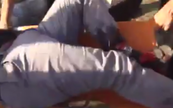
Israeli soldiers shot and injured, Monday, two young Palestinian men, including one who suffered a serious injury, during clashes that erupted east of Jabalia town, in the northern part of the Gaza Strip.
Media sources in Gaza said the soldiers, stationed on military towers across the border fence, east of Jabalia town, fired many live rounds and gas bombs at young Palestinian men for “approaching the border fence.
The incident led to clashes between the soldiers and the local youngsters, before the army fired more gas bombs and concussion grenades.
Medical sources said one Palestinian suffered a serious injury after being shot with a gas bomb directly in the head, and was moved to the Indonesian hospital, in nearby Beit Lahia town, and another young man was shot in his leg, suffering a moderate injury.
Media sources in Gaza said the soldiers, stationed on military towers across the border fence, east of Jabalia town, fired many live rounds and gas bombs at young Palestinian men for “approaching the border fence.
The incident led to clashes between the soldiers and the local youngsters, before the army fired more gas bombs and concussion grenades.
Medical sources said one Palestinian suffered a serious injury after being shot with a gas bomb directly in the head, and was moved to the Indonesian hospital, in nearby Beit Lahia town, and another young man was shot in his leg, suffering a moderate injury.
8 july 2017
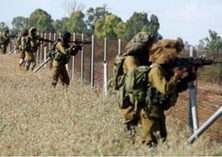
On Friday, Israeli soldiers, stationed across the border fence, east of Jabalia in the northern part of the besieged Gaza Strip, opened fire on Palestinian protesters wounding two, including one who suffered a serious injury.
Medical sources said the soldiers shot one Palestinian with a gas bomb to the dead, leading to a life-threatening injury, while another Palestinian was shot with a live round in his leg. Both Palestinians were moved to Kamal Adwan hospital.
In related news, the soldiers fired several live rounds at a Palestinian ambulance, east of Gaza City.
The Israeli attacks took place as the soldiers opened fire of protesters in Palestinian lands, close to the border fence, in the eastern part of the Gaza Strip.
Medical sources said the soldiers shot one Palestinian with a gas bomb to the dead, leading to a life-threatening injury, while another Palestinian was shot with a live round in his leg. Both Palestinians were moved to Kamal Adwan hospital.
In related news, the soldiers fired several live rounds at a Palestinian ambulance, east of Gaza City.
The Israeli attacks took place as the soldiers opened fire of protesters in Palestinian lands, close to the border fence, in the eastern part of the Gaza Strip.
Truce violations List of names Pictures of martyrs
Days: Aug: 26 - 25 - 24 - 23 - 22 - 21 - 20 - 19 - 18 - 17 - 16 - 15 - 14 - 13 - 12 - 11 - 10 - 9 - 8 - 7 - 6 - 5 - 4 - 3 - 2 - 1
July: 31 - 30 - 29 - 28 - 27 - 26 - 25 - 24 - 23 - 22 - 21 - 20 - 19 - 18 - 17 - 16 - 15 - 14 - 13 - 12 - 11 - 10 - 9 - 8
